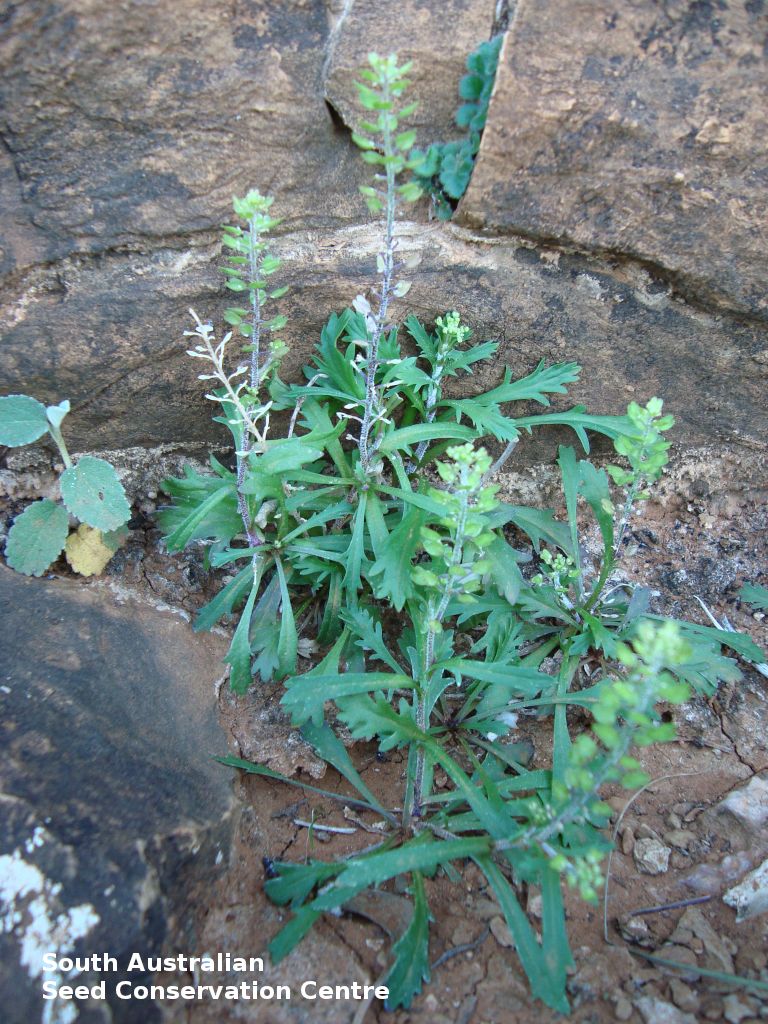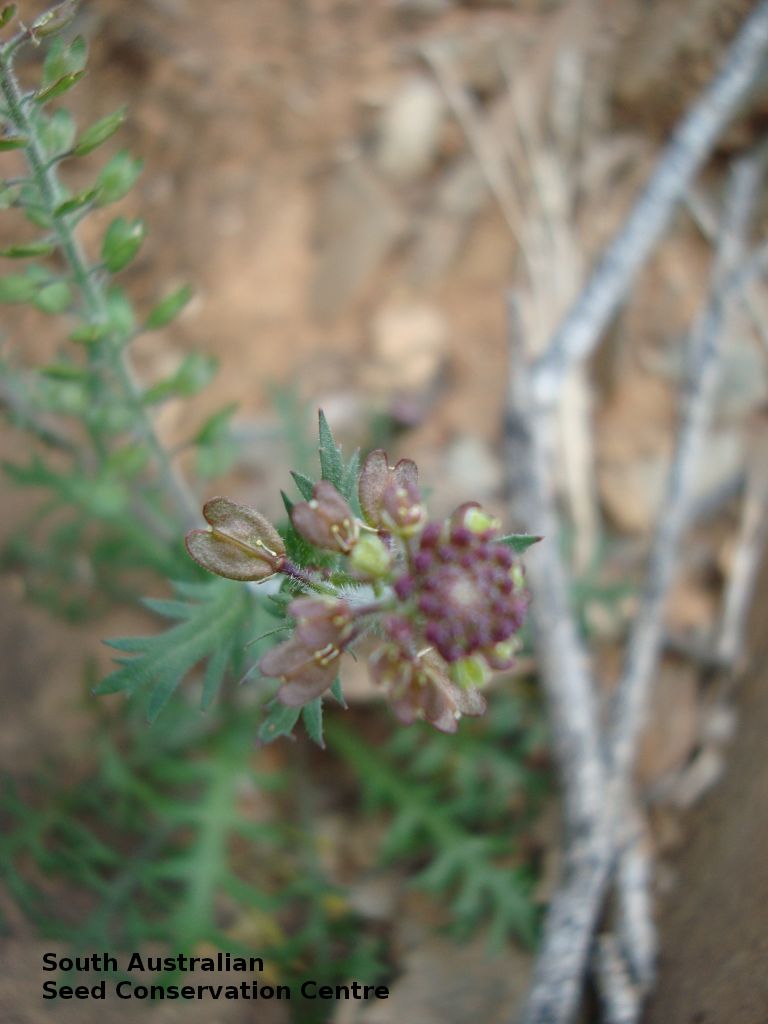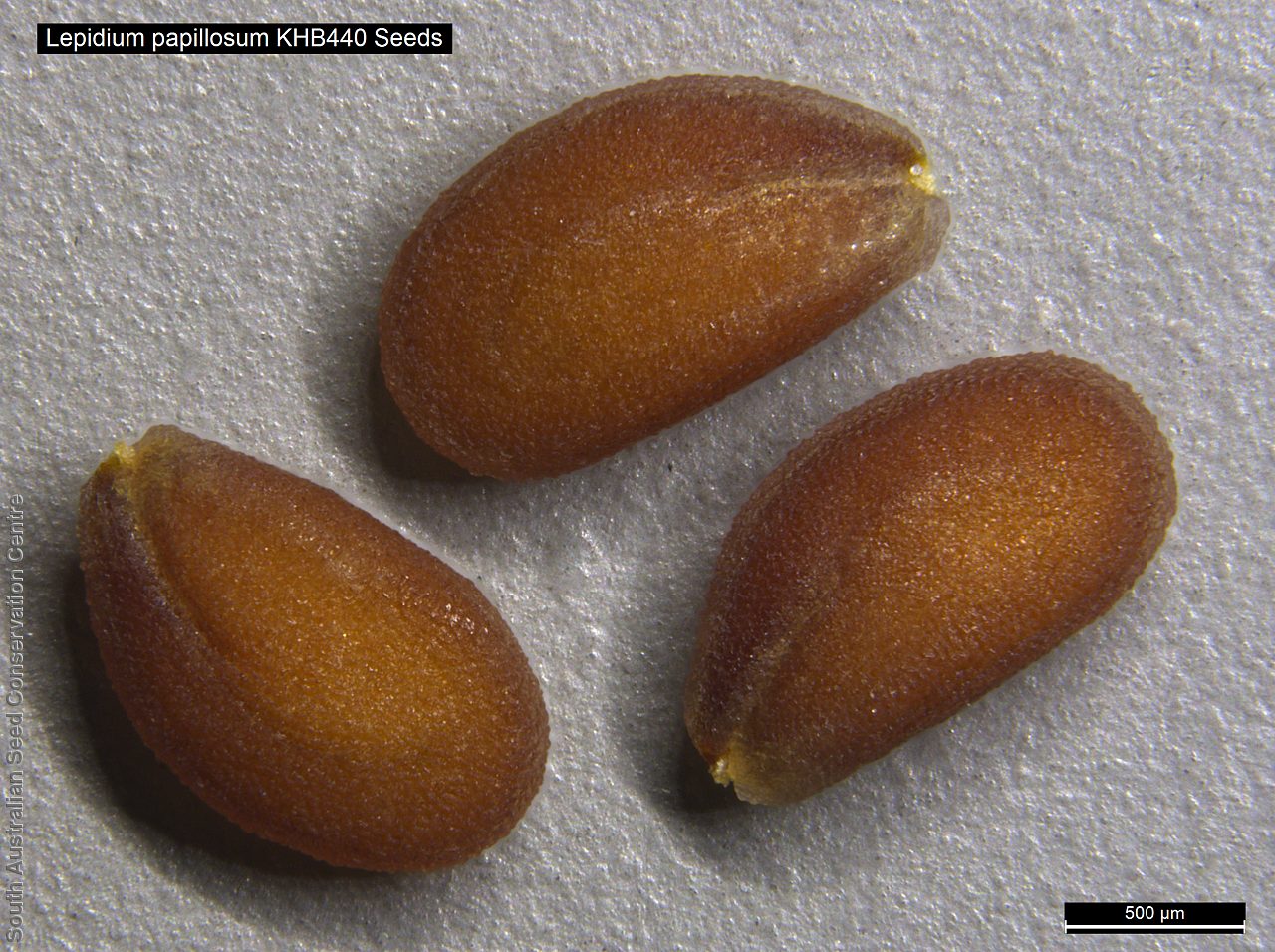Warty Peppercress
Display all 6 images






Regional Species Conservation Assessments per IBRA subregion.


Least concern
Near threatened
Rare
Vulnerable
Endangered
Critically endangered
Extinct
Data deficient
Adelaide
Arkaroola
Ceduna
Coober Pedy
Hawker
Innamincka
Marla
Marree
Mount Gambier
Oodnadatta
Renmark
Wudinna
Keith
Yunta
Display IBRA region text
| Broughton (FLB02) | Flinders Lofty Block | Rare (IUCN: RA d(i,ii)) (Probable Decline) [limited habitat] |
| Olary Spur (FLB03) | | Least Concern |
| Southern Flinders (FLB04) | | Least Concern |
| Northern Flinders (FLB05) | | Least Concern |
| Central Flinders (FLB06) | | Least Concern |
| St Vincent (EYB02) | Eyre Yorke Block | Rare (IUCN: RA d(i,ii)) (Probable Decline) [limited habitat] |
| Eyre Mallee (EYB05) | | Vulnerable (IUCN: VU B2ab(i,ii,iii)) (Definite Decline) [records are questionable] |
| South Olary Plain (MDD01) | Murray Darling Depression | Least Concern |
| Murray Mallee (MDD02) | | Rare (IUCN: RA d(i,ii)) (Probable Decline) [edge of range] |
| Braemer (MDD07) | | Least Concern |
| Murray Scroll Belt (RIV06) | Riverina | Rare (IUCN: RA d(ii)) (Probable Decline) |
| Myall Plains (GAW01) | Gawler | Least Concern |
| Gawler Volcanics (GAW02) | | Least Concern |
| Gawler Lakes (GAW03) | | Least Concern |
| Arcoona Plateau (GAW04) | | Least Concern |
| Kingoonya (GAW05) | | Rare (IUCN: RA d(i,ii)) |
| Barrier Range (BHC01) | Broken Hill Complex | Least Concern |
| Barrier Range Outwash (BHC04) | | Least Concern |
| Bimbowrie (BHC05) | | Least Concern |
| Curnamona (BHC06) | | Least Concern |
| Simpson Desert (SSD02) | Simpson Strzelecki Dunefields | Rare (IUCN: RA d(ii)) |
| Dieri (SSD03) | | Rare (IUCN: RA d(ii)) |
| Breakaways (STP01) | Stony Plains | Rare (IUCN: RA d(ii)) |
| Oodnadatta (STP02) | | Rare (IUCN: RA d(ii)) |
| Murnpeowie (STP03) | | Rare (IUCN: RA d(ii)) |
| Witjira (STP06) | | Rare (IUCN: RA d(ii)) |
| Baltana (STP07) | | Rare (IUCN: RA d(ii)) |
| Sturt Stony Desert (CHC02) | Channel Country | Rare (IUCN: RA d(ii)) |
| Coongie (CHC06) | | Rare (IUCN: RA d(ii)) |
| Lake Pure (CHC07) | | Rare (IUCN: RA d(ii)) |
| 5 of 6 subregions | Flinders Lofty Block | Least Concern , Rare |
| 2 of 5 subregions | Eyre Yorke Block | Rare , Vulnerable |
| 3 of 6 subregions | Murray Darling Depression | Least Concern , Rare |
| Murray Scroll Belt (RIV06) | Riverina | Rare (IUCN: RA d(ii)) (Probable Decline) |
| 5 of 8 subregions | Gawler | Least Concern , Rare |
| 4 of 4 subregions | Broken Hill Complex | Least Concern |
| 2 of 4 subregions | Simpson Strzelecki Dunefields | Rare |
| 5 of 7 subregions | Stony Plains | Rare |
| 3 of 4 subregions | Channel Country | Rare |
Botanical art
Kath Alcock paintings: 3
Common names
Warty Peppercress
Etymology
Lepidium from the Greek 'lepis' meaning a scale; referring to the appearance of the fruits. Papillosum means covered with nipples or minute lobes; referring to the bladder-like hairs on the stems and fruits.
Distribution and status
Found mainly in the east central part of South Australia, growing on heavy soils near lakes, rivers and streams in semi-arid areas. Also found in Western Australia, Queensland, New South Wales and Victoria. Native. Common in South Australia. Uncommon in Western Australia, Queensland and Victoria. Common in New South Wales.
Herbarium regions: Lake Eyre, Gairdner-Torrens, Flinders Ranges, Eastern, Eyre Peninsula, Northern Lofty, Murray
AVH map: SA distribution map (external link)
Plant description
Erect ephemeral or annual herb to 30 cm high, mature plants often purplish, stems covered with white, inflated, bladder-like hairs. Basal leaves linear-cuneate, to 10 cm long, toothed to bipinnate lobed, stem leaves becoming smaller, finally sessile, broadly toothed. Inflorescence an elongating spike with tiny white flowers, petals absent. Flowering between June and September. Fruits are red-brown ellipsoid pod to 6 mm long and 5 mm wide, with scattered needle-like hairs, winged in the upper half forming an open notch about one-fifth of the length of the fruit. Seeds are orange-brown reinform seed to 1.5 mm long and 0.9 mm wide, with fine tuberculated surface. Seed embryo type is bent.
Seed collection and propagation
Collect seeds between August and November. Collect maturing pods those turning pale brown with hard seeds inside. Be gentle with the pods as they split open easily. Place the pods in a tray and cover with paper to prevent seeds from popping out and leave to dry for a week. Then rub the dried pods gently by hand to dislodge the seeds. Use a sieve to separate the unwanted material. Store the seeds with a desiccant such as dried silica beads or dry rice, in an air tight container in a cool and dry place.
| Location | No. of seeds
(weight grams) | Number
of plants | Date
collected | Collection number
Collection location | Date
stored | % Viability | Storage
temperature |
MSB |
18,000 (5.12 g) | 100 | 25-Sep-2008 | DJD1138
Lake Eyre | | 95% | |
Location: BGA — the seeds are stored at the Adelaide Botanic Gardens, MSB — the seeds are stored at the Millennium Seed Bank, Kew, England.
Number of plants: This is the number of plants from which the seeds were collected.
Collection location: The Herbarium of South Australia's region name.
% Viability: Percentage of filled healthy seeds determined by a cut test or x-ray.







